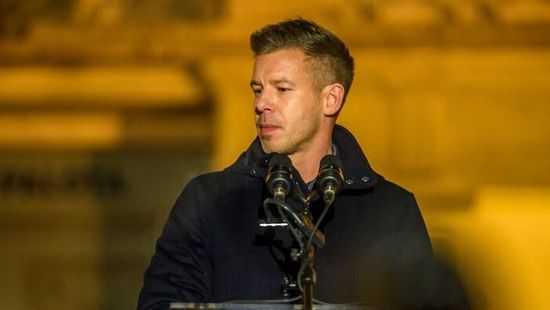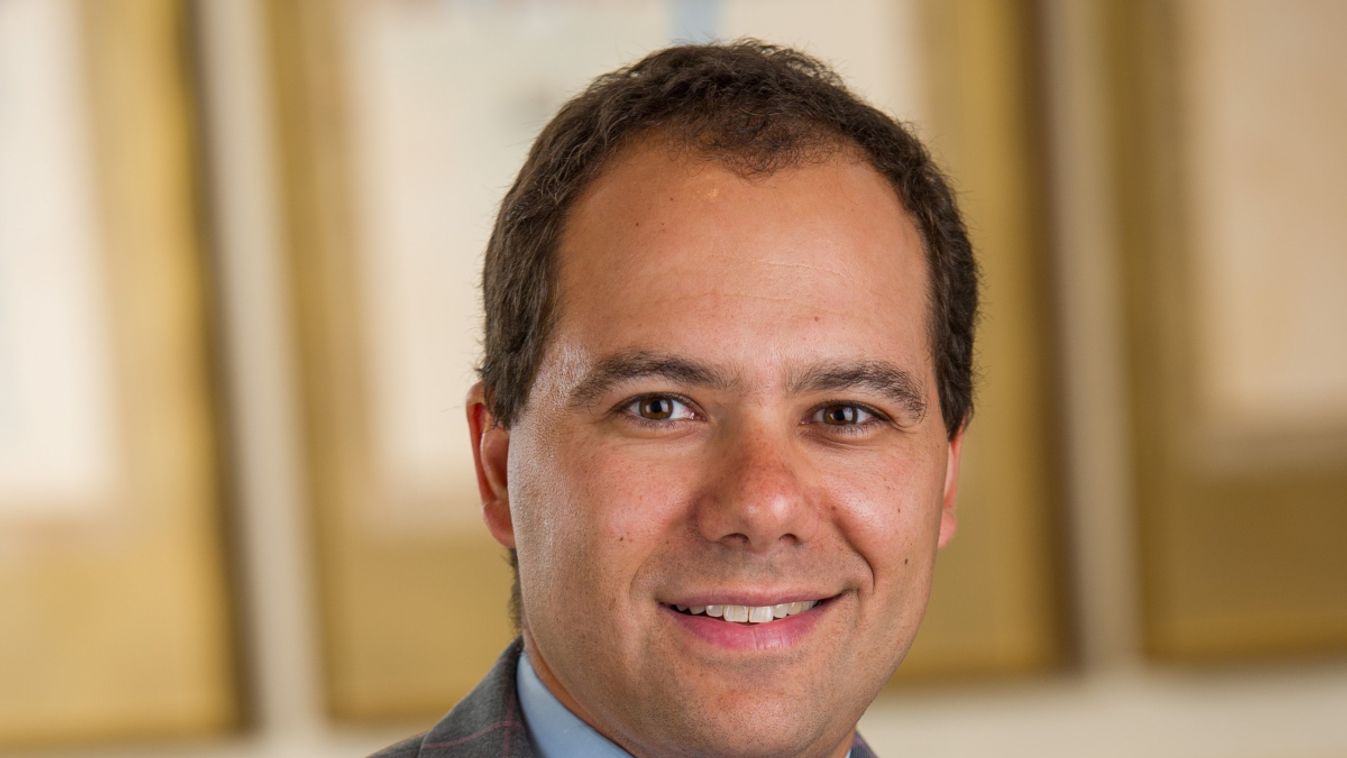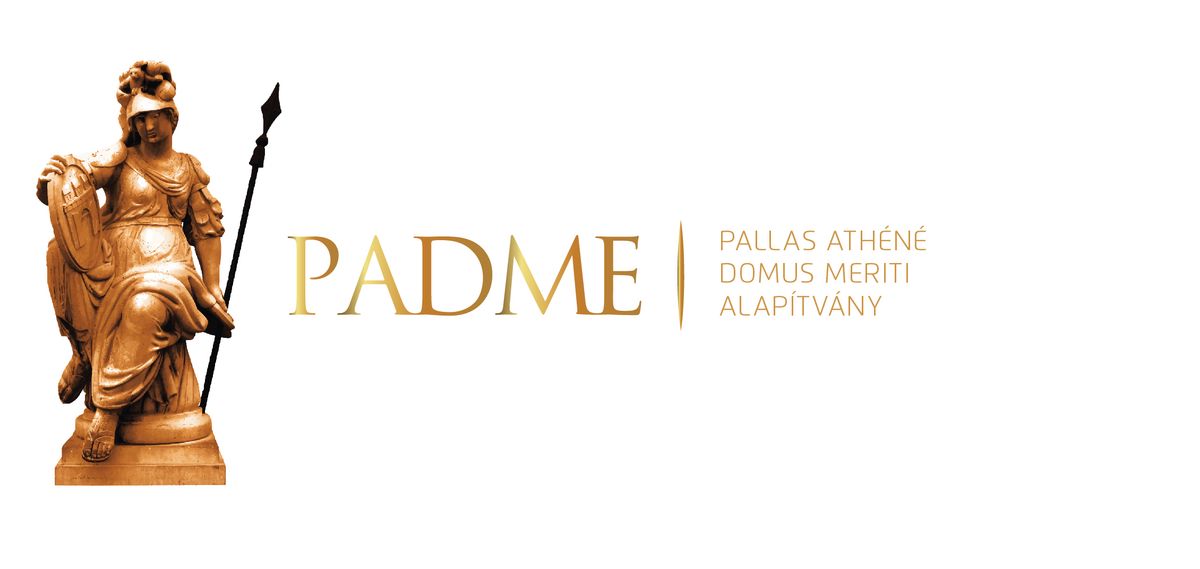Magyar Péter foghatja a fejét: ezért nem tudott növekedni a Tisza Párt népszerűsége

A szakértők szerint olyasmit igyekeztek vitorlájukba fogni, amiből nagyon nem jött össze a politikai haszonszerzés.

Historically, the Supreme Court and the issue of judicial nominations has been a much more powerful one for Republican than Democrats. That may change this year, but of course in 2016, the Scalia vacancy and question about who would get to appoint his successor won Trump the election – Ilya Shapiro, director of the Robert A. Levy Center for Constitutional Studies at the Cato Institute, pointed out in a conversation with Lénárd Sándor.

Ilya SHAPIRO is the director of the Robert A. Levy Center for Constitutional Studies at the Cato Institute and publisher of the Cato Supreme Court Review. He is the author of Supreme Disorder: Judicial Nominations and the Politics of America’s Highest Court (2020), co‐author of Religious Liberties for Corporations? Hobby Lobby, the Affordable Care Act, and the Constitution (2014), and editor of 11 volumes of the Cato Supreme Court Review (2008–18)

We originally wanted to speak only about your newly published book but life stepped in. We recently received the news that Justice Ruth Bader Ginsburg passed away. She was a symbol of resilience and dedication. What memories do you have on her?
I think there are many parallels to Justice Antonin Scalia passing four years ago. She is a legal giant,
hero of the progressive side and a trailblazing lawyer for the women’s right movement.
Even when you disagree with her, you could tell that she put a lot of thought, efforts, research and professionalism into everything she did. She was also a very kind person too with a very good personal reputation.
Your new book, Supreme Disorder: Judicial Nominations and the Politics of America's Highest Court is about to be published. You argue that partisan debates has long overshadowed judicial nominations. Since judicial politics of American Presidents, if we think of the “midnight judges” of President John Adams, have always been part of the country’s history, I am wondering when, in your view, these politics turned into ferocious partisan debates.
First of all I commend you for your knowledge of the “midnight judges.” I think most Americans have either never learned or long forgotten about that. However, this is an interesting episode. John Adams lost his reelection campaign against Thomas Jefferson and then appointed many judges including Chief Justice John Marshall. The great Chief Justice was actually a lame duck nomination by a President who lost his reelection campaign. So politics have played a role since the very beginning. Even President George Washington had one of his nominees rejected for example. This is not something that began with Clarence Thomas, Robert Bork, or in the 20th century. However, you are right to put the finger on the fact that now we have something different.
Beyond politics, divergent judicial philosophies or interpretative theories map onto partisan preferences at a time when the parties are more ideologically separated or sorted than ever.
It is a zero-sum game; there is a finite number of seats while the court is deciding so many issues over a significant number of states. Of course, these battles over the vacancies are going to be fraught.
The confirmation processes throughout the 19th and early 20th century were relatively smooth. Can you pinpoint a concrete period when it became more and more vitriolic?
It depends what you mean by relatively smooth. Historically, just over three quarters of nominations have been confirmed. When the Senate and the White House are controlled by the same party, it is about 90% and when they are controlled by different parties, it is just under 60%. Frankly, I think the most controversial confirmation battle was in 1916 with Louis Brandeis, who was the first Jewish nominee and a social crusader. His confirmation took five months, which is the longest confirmation process. Although his ultimate confirmation vote was not as close as for Clarence Thomas, Brett Kavanaugh or Samuel Alito, the controversy turned out to be huge. Interestingly, Brandeis himself did not testify because it was seen as unseemly for the nominee himself to present himself before the Senate. However, the modern age, I think, started in 1968. Chief Justice Earl Warren who had a controversial period both on civil rights and criminal procedure that the conservatives did not like. When he announced his retirement, Lyndon Johnson, not running for reelection, announced his intention to elevate Abe Fortas, then Associate Justice of the Supreme Court. Because of various ethical concerns. Abe Fortes faced bipartisan opposition and he never even had fifty supporters in the Senate. Then some of the nominees of Richard Nixon and of Ronald Reagan also failed. A gradual escalation or shift began, with a focus on ideology and judicial philosophy, ratcheting up over the last few decades.
What in your view is behind or what is the root cause of these ferocious partisan debates around judicial nominations?
The Supreme Court and the lower courts decide so many important issues for such a large and pluralistic country. They do so in cultural war issues like abortion, guns, affirmative action (racial preferences in education or employment), or questions of federal power. Then there’s the problem that Congress does not legislate so much; instead, it passes its big bills that leave it to administrative agencies to fill in the blank. If those bureaucrats harm you, you cannot un-elect them, you can just sue them.
Can we also say that the federal judiciary is gradually expanding its own competences?
It has been doing so for decades. It started in the 1930s. It has taken many decades for the courts to expand their own powers, allowing Congress to take power away from the states and centralizing it in Washington, and also skewing that federal power towards the executive branch. This made the courts more and more important. As the courts became more important, obviously who is on the courts becomes also more important.
You are offering some remedies to this American political dilemma in your new book. Can you shed light on them?
Many reforms have been proposed over the years. The most common one is term limits for justices. If you had an 18-year term with a vacancy every two years, it would guarantee that each presidential term has two vacancies to fill. This would therefore eliminate the surprises or arbitrary nature of when vacancies arise. We would neither have people serving thirty years. This seems to be a confidence building measure for the public. However, one has to understand that would not change the composition of the court over time. So, if those limits had been in place over the last twenty years, we would now have on the Supreme Court three George W. Bush, four Barack Obama and two Donald Trump appointees. In other words we would have 5 Republican and 4 Democrat appointees. And what do we have now? The same (well, 4 minus Justice Ginsburg’s passing). A further problem is that it would take a constitutional amendment.
Another proposal is “packing the Court” or expanding the number of Justices. If you had 19 Justices, you would have fewer 10:9 decisions than we now have 5:4 decisions. Moreover, each seat would be less significant. The problem comes in getting to that number and the taint of “Court packing” being associated with left-wing activists or Franklin Roosevelt in the ‘30s, when he proposed to add five justices in a hugely unpopular initiative. So the potential transition problem is very difficult.
Third, you have process reforms, such as setting a certain rule for how soon after a nomination there has to be a hearing or a vote, or regulating the hearings. However, all of these proposals are just rearranging the deck chairs on the Titanic.
The problem is not with the process, instead it is with the product: the Court is too powerful.
The only way to decrease the tensions and the craziness surrounding vacancies is to reduce the power of the Court. On the one hand, power has to be returned to the States and to the people. On the other hand, it also has to be reoriented in Washington so Congress is hashing out these important cultural and policy differences rather than throwing it to the bureaucracy. I think rebalancing federal power is the only way to resolve these tensions.
Nevertheless, here we are. The death of Justice Ruth Bader Ginsburg might open up the possibility to President Trump to nominate a new, third justice. How in your view the confirmation process might unfold?
We are 45 days before the election. In history, there are possibilities for having a confirmation in that short amount of time. Ruth Bader Ginsburg herself took 42 days to be confirmed. But of course it was not right before an election. So it is very different. Two Republican Senators already said that they would not vote to confirm before the election. The Republicans currently have a 53 – 47 majority in the Senate, so they cannot spare too many votes. Senate Leader Mitch McConnell wants to run this through, but some of the more moderate Republicans running for reelection in very competitive States really do not want to have to take a position one way or another. I am sure they are telling their leader not to have the vote before the election. It has been leaked to the media that the White House plans to announce a nominee very soon, within days. Then, it will take a while to arrange hearings. They will probably start that process but it’s unlikely that Mitch McConnell will have the votes to confirm before the election.
What could happen after the election?
There is no constitutional principle at stake; this is pure power politics. There is game theory involved. If Donald Trump wins and the Republican keep the Senate, they are going to confirm. If Donald Trump loses but the Republicans keep the Senate, they are probably confirm anyway since they do not fear any repercussion. However, if Democrats win both the White House and the Senate, there is a lame duck period until January when the new Senate and the President are inaugurated. The Republicans might try to work out a deal because the threat then is court packing. If the Republicans confirm, the Democrats are going to be very angry and they might just add four Justices so that they can a have a 7 – 6 majority.
We have been witnessing a quite stormy election year so far. Initially we thought that the impeachment would have a decisive effect then the pandemic seemed to dominate the campaign and then everyone thought that the economic downturn and riots would leave their marks. Here we are now in September and there is another switch on the switch with the death Justice Ginsburg. How can this new vacancy in the Supreme Court would influence the campaign and the upcoming 2020 presidential election?
Four years ago in 2016, Donald Trump would not have won had it not been for the Supreme Court vacancy. There were exit polls that he won significantly over people who were concerned about that particularly in the key swing states, Michigan, Wisconsin and Pennsylvania. Scalia’s death really crystallized that issue.
Trump’s innovation was that he published a list of potential nominees because Republicans were unsure who this guy would appoint.
Remember, he had no background in politics, he had been a Democratic donor, had been “pro choice” on the abortion issue, etc. Therefore, putting out that list was a significant step in unifying the coalition and getting people out to the polls. This is almost a replay now. He is trying to play from the same playbook. Some people who are wavering on Trump might be saying now that I cannot risk the Democrats filling that seat. Historically, the Supreme Court and the issue of judicial nominations has been a much more powerful one for Republicans than for Democrats. This development at this point is more likely to benefit Donald Trump than Joe Biden.
***
A cikk a Pallas Athéné Domeus Educationis Alapítvány támogatásával valósult meg.
